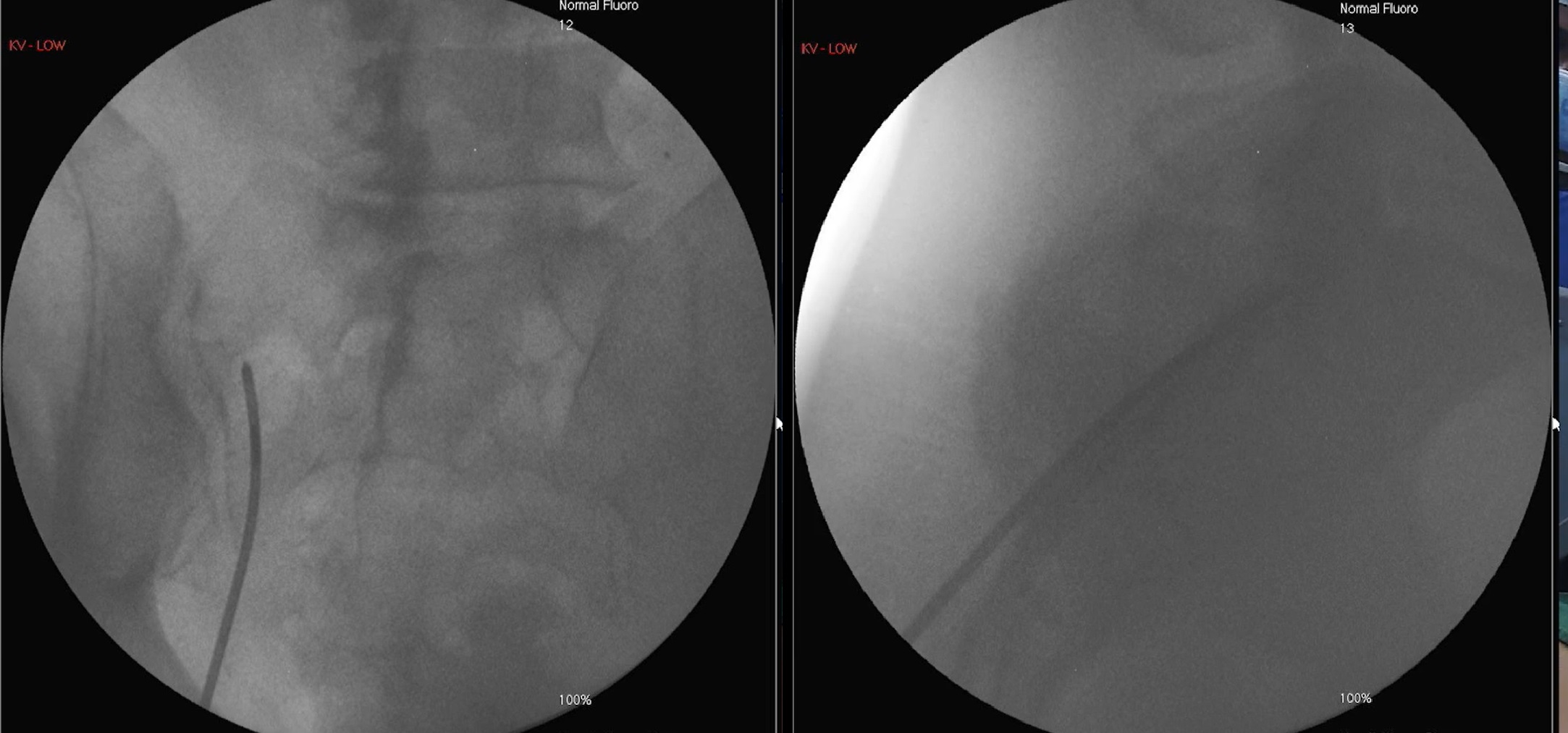Cryoneurolysis of Sacroiliac Joint | Long-Term Pain Relief

Cryoneurolysis of Sacroiliac Joint is an emerging interventional technique that offers promising results for patients suffering from sacroiliac joint (SIJ) pain. This procedure uses extreme cold to disrupt nerve function and aims to provide sustained pain relief.
Indications
Cryoneurolysis of Sacroiliac joint (SIJ) is primarily indicated for patients with chronic SIJ pain that has not responded to conservative treatments such as physical therapy, medications, or intra-articular steroid injections. It is particularly beneficial for individuals seeking longer-term relief without resorting to more invasive surgical options.
Contraindications
Contraindications for SIJ cryoneurolysis include:
- Active infection at the injection site
- Bleeding disorders or anticoagulant therapy
- Allergy to local anesthetics
- Pregnancy
- Severe psychiatric disorders
Procedure Steps
C-Arm Guided Cryoneurolysis of Sacroiliac Joint : Step-by-Step Procedure
1. Patient Positioning
- The patient is placed in a prone position on the fluoroscopy table.
- A cushion is used under the abdomen for comfort and optimal needle trajectory.
2. Identifying the Target Area
- The C-arm is adjusted to obtain a contra lateral oblique view of the sacrum.
- The space between the lateral sacral crest/medial sacroiliac joint line and sacral foramina (S1-S3) is identified.
- The target is the lateral branches of the sacral nerves, which innervate the SIJ.
3. Needle Placement
- Under fluoroscopic guidance, a 22G spinal needle is inserted at the lateral edge of the sacrum, and local anesthetic is injected.
4. Cryoneurolysis Application
- A cryoprobe is inserted through the same trajectory.
- The probe is cooled to -80°C, creating an ice ball around the nerve.
- For maximum efficacy, a freezing cycle (3 minutes) followed by 1 minute of passive thawing is performed thrice.
5. Completion & Post-Procedure Care
- The probe is removed, and the site is cleaned.
- The patient is monitored for 30 minutes before discharge.
- Mild soreness is expected for a few days, with significant pain relief within 2 weeks.
Ultrasound (USG) Guided Cryoneurolysis of Sacroiliac Joint
For cases where fluoroscopy is unavailable, ultrasound guidance can be used:
- A high-frequency linear probe is placed over the sacrum.
- The lateral sacral crest is visualized.
- Cryoneurolysis is performed using the same freezing cycles.
While USG guidance avoids radiation exposure, fluoroscopy (C-arm) remains the gold standard due to better anatomical visualization and higher procedural accuracy.
Advantages of Cryoneurolysis of Sacroiliac Joint
Compared to intra-articular steroid injections and radiofrequency ablation (RFA), cryoneurolysis offers several benefits:
- Duration of Pain Relief: A study by Gautam Das et al. has shown that cryoneurolysis provides more prolonged pain relief. In a retrospective study, patients receiving cryoneurolysis reported significant pain reduction at 1, 3, and 6 months post-procedure, with 69.23% maintaining ≥50% pain relief at 6 months, compared to 27.27% in the steroid injection group. Lippincott Journals
- Minimally Invasive: The procedure is less invasive than surgical interventions and can be performed outpatient.
- Repeatability: Cryoneurolysis can be repeated if necessary without significant adverse effects.
Disadvantages of Cryoneurolysis
Despite its advantages, cryoneurolysis has certain limitations:
- Limited Availability: Access to specialized equipment and trained personnel may be restricted in some regions.
- Potential Nerve Regeneration: Nerves may regenerate over time, potentially leading to the return of symptoms.
- Lack of Long-Term Data: While short- to medium-term results are promising, long-term efficacy and safety data are still under investigation.
In contrast, intra-articular steroid injections are widely available and provide immediate pain relief but often with a shorter duration. RFA offers longer-lasting relief than steroids but may be associated with higher discomfort during the procedure and requires precise needle placement.
In conclusion, cryoneurolysis presents a viable alternative for patients with chronic SIJ pain, especially those unresponsive to conventional therapies. Its advantages in providing extended pain relief make it a compelling option, though considerations regarding availability and long-term outcomes should be taken into account.
Cryoneurolysis of Sacroiliac Joint vs. Other SIJ Pain Treatments
| Treatment | Pain Relief Duration | Invasiveness | Common Indications |
|---|---|---|---|
| Cryoneurolysis | About 12-18 months | Minimally invasive | Chronic SIJ pain, failed steroids/RFA |
| Intra-articular Steroid Injection | 2-3 months | Least invasive | Acute SIJ inflammation |
| Radiofrequency Ablation (RFA) | About 12-18 months | Minimally invasive | SIJ pain |
References:
- Sahoo RK, Das G, Pathak L, et al. Cryoneurolysis of Innervation to Sacroiliac Joints: Technical Description and Initial Results—A Case Series. A&A Practice. 2021;15(4):e01427. PubMed
- Das G, Das S, Sahoo R, et al. Efficacy of Cryoneurolysis Versus Intra-Articular Steroid in Sacroiliac Joint Pain: A Retrospective, Case-Control Study. Indian Journal of Anaesthesia. 2023;67(10):1109-1115. Lippincott Journals

